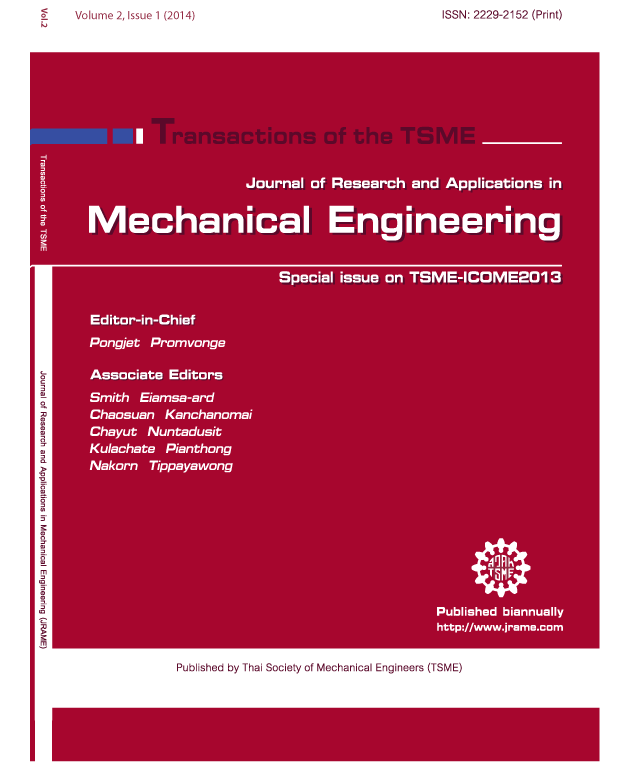Energy comparison of the optics and tracking system for evacuated solar thermal collector by using ray tracing analysis
Main Article Content
Abstract
Evacuated tube solar collector is one of the feasible alternatives for heating demand application such as absorption chiller. They are mostly suitable for supplying outlet temperature up to 100oC. In this paper, we present a tracking evacuated tube solar collector with semi-parabolic reflector to improve the efficiency of glass tube solar collector. Firstly, the ray tracing analysis is employed to design the suitable optics for non-tracking glass evacuated tube solar collector. Next, the intensity and beam pattern on heat absorber of each optics is determined to select the appropriate optics. Then, to compare the energy between non-tracking and tracking solar tube collectors with reflector system, the total power on heat absorber and the total power per installation area during the daytime are figured out by using the sun position referring to the solar equation. According to the analysis, the presented tracking evacuated glass tube solar collector with reflector can drastically increase the power on heat absorber and power per installation area especially in the morning and evening. This model can be used to understand and predict the efficiency of the prototype for the better evacuated tube solar collector.
Article Details
This work is licensed under a Creative Commons Attribution-NonCommercial-ShareAlike 4.0 International License.
References
systems using concentrator augmented solar collectors, Applied Energy, Vol. 89, 2012, pp. 380-386.
[2] Duffie, J.A. and Beckman, W.A. Solar engineering of thermal processes, 3rd ed., Hoboken, New Jersey, USA,
John Wiley and Sons, Inc., 2006.
[3] Schmid, R., Collins, R.E. and Mannik, E. Performance comparison of flat plate and evacuated tubular
collectors used in the Sydney University solar cooling and heating project, University of Sydney, Australia,
2006.
[4] John, A.D. and William, A.B. Solar Engineering of Thermal Processes, Second Edition, Wiley, Canada,
1991.
[5] Shah, L.J. and Furbo, S. Vertical evacuated tubular-collectors utilizing solar radiation from all directions,
Applied Energy, Vol. 78, 2004, pp. 371-95.
[6] Soteris, A.K. Solar Energy Engineering Process and Systems, Academic Press, London, 2009.
[7] Garg, H.P. and Prakash, J. Solar Energy Fundamentals and Applications, Seventh Edition, Tata McGraw-Hill,
New Delhi, 2006.
[8] Janjai, S. Solar Radiation Map from Satellite Data for Thailand, Solar Energy Research Laboratory, Silpakorn
University, Thailand, 2010.
[9] Elmer, W.B. The Optical Design of Reflectors, NY: John Wiley & Sons, New York, 1980.



